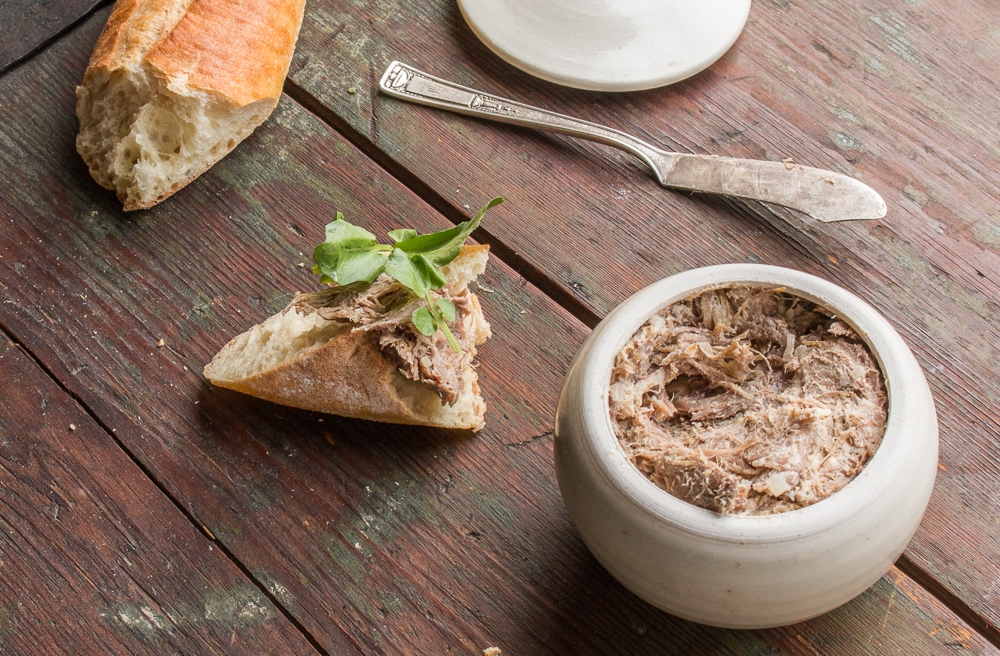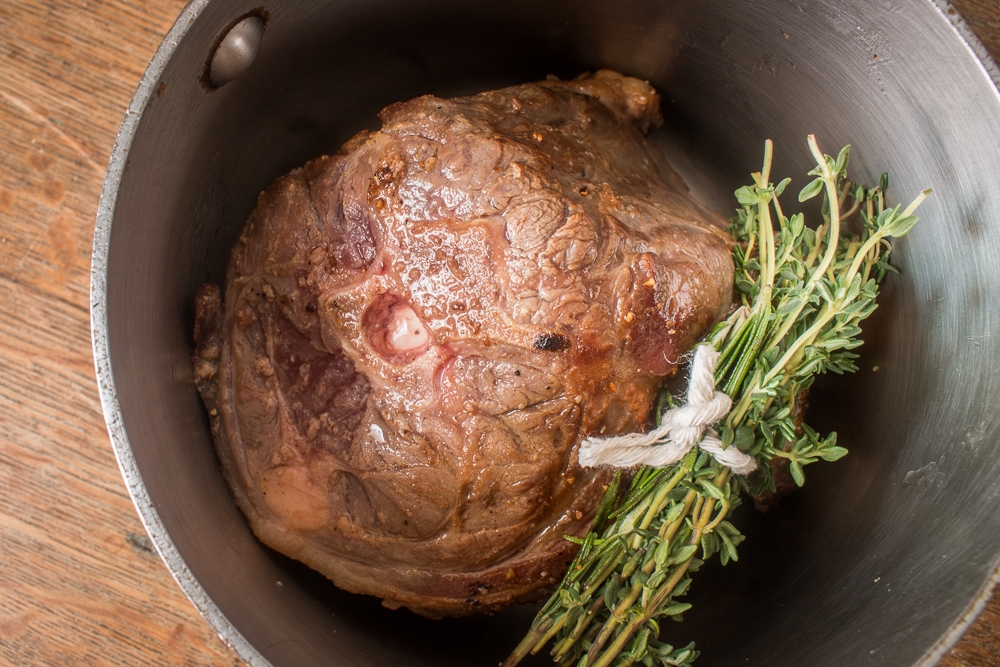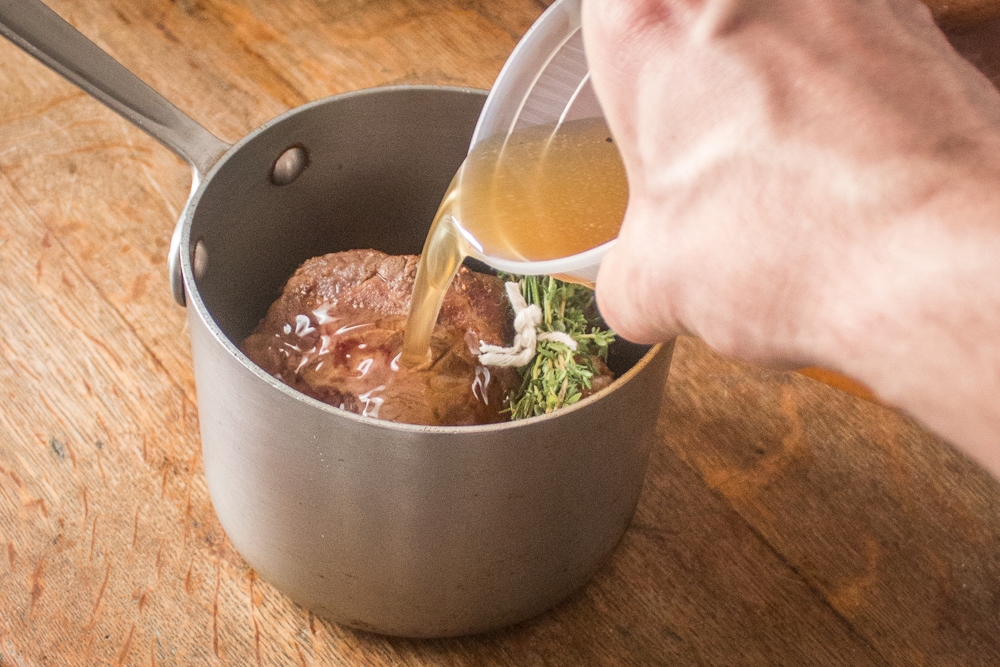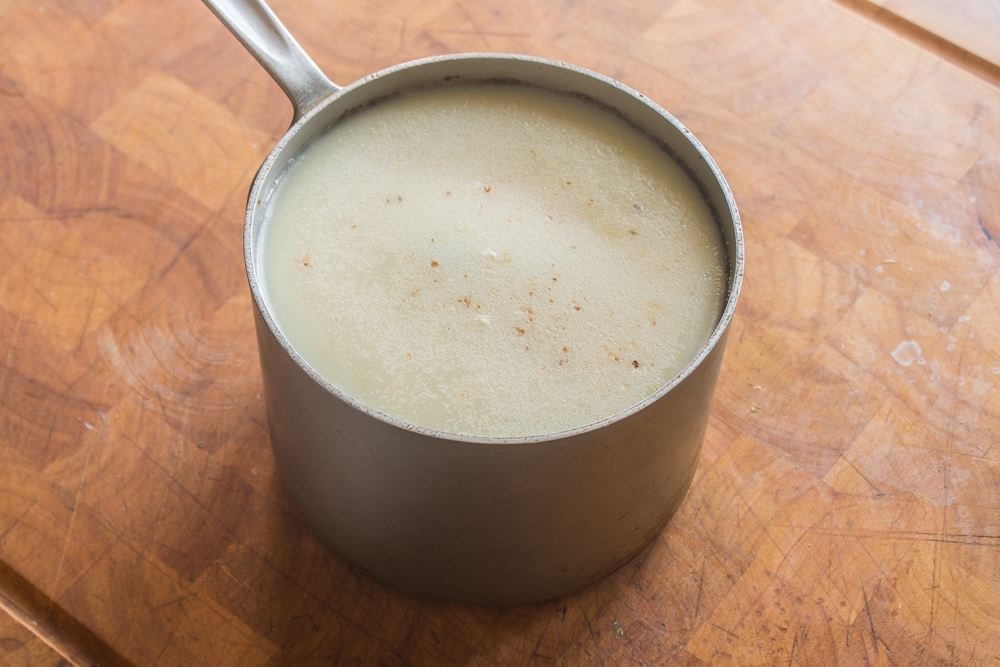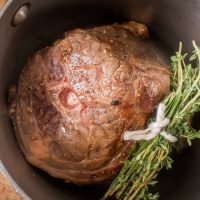How to Make Confit Lamb at Home (Recipe)
Confit, or highly seasoned meat cooked slowly in it’s own fat, is a classic French method of meat preservation dating back to times before we had refrigerators and freezers to preserve meat for the winter. In this post, I’ll show you how to make your own confit lamb at home.
How to Make Lamb Confit
In a perfect world, you want to use cuts of meat for slow cooking. With lamb, goat, and other ruminants like venison, shoulder is one of the most commonly used cuts for confit, but neck is just as good.
After cooking in fat, confit was typically cooked again with beans or in stews, or made into rillettes, a sort of spreadable, shredded meat pate. Now days, chefs (and home cooks) serve confit in all kinds of ways, but some of the classic ways are still the best.
If you look online, making confit can be intimidating as it calls for a lot of rendered tallow. Rendered tallow will give confit with the deepest flavor, but originally the meat was cooked in tallow or lard since it would solidify after cooking, and form an air tight seal. If you’re making confit at home, and don’t have animal fats, it’s fine to substitute cooking oil along with some animal fat, or in a pinch, even just oil, just don’t brag about it to a chef from France.
How Much Salt to Add to Confit
Chef Bergo has made confit for years, out of many different animals. He recommends from 1.5% salt by weight. To find out how much to season our lamb neck, we take the weight in ounces, and convert it to grams. Our neck was 2.5 lbs, or 1120 grams. 1120 grams x .015 is 17 grams, or 1 heaping tablespoon of kosher salt.
After the confit is cooked, Chef Bergo recommends letting it sit under the lard for at least a few days, but it can be eaten right away. It’s excellent on top of cooked white beans and wilted greens, or save it to make lamb rillettes!
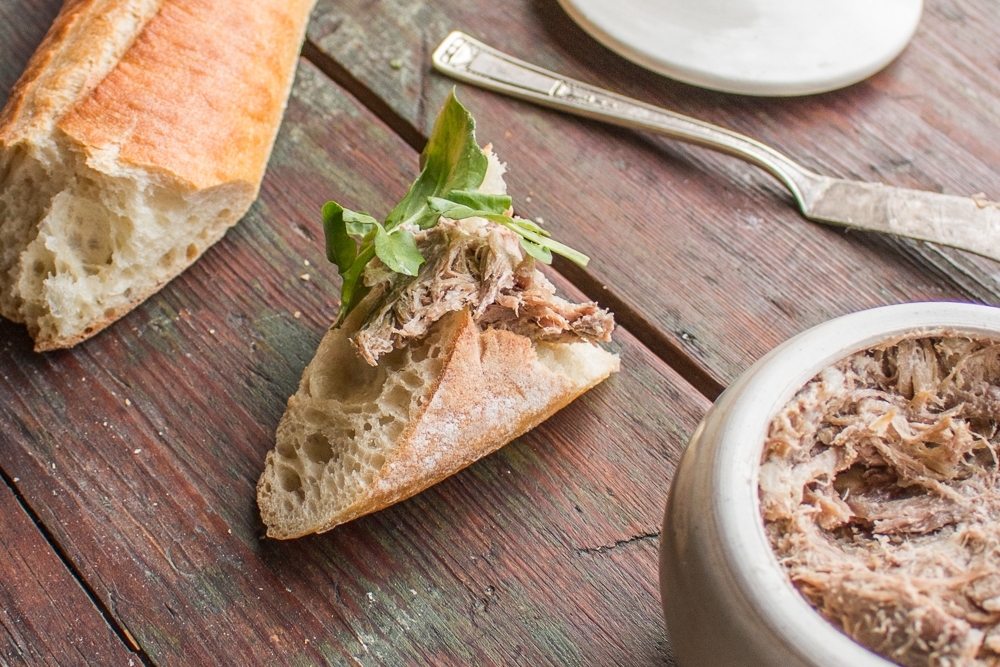
This recipe is by James Beard Award-winning Chef Alan Bergo. He’s a chef from Minnesota and author of The Forager Chef’s Book of Flora. Learn more about Chef Alan at foragerchef.com.

Looking to buy lamb or goat online? Shepherd Song Farm: Grass to table. We raise lambs & goats traditionally, humanely and sustainably. 100% Grass Fed, Pasture Raised, Never Confined, no Hormones, Grains or Animal Byproducts. Born, raised and processed in the U.S.A. Good for you and good for the environment.
Related Posts
French Lamb Stew with Mushrooms and Red Wine (Bourguignon)
How to Cook Lamb or Goat Neck, with Recipes
Homemade Lamb Confit
Equipment
- A baking dish or pan the neck can fit in snugly, such as an 8 inch diameter saucepan
Ingredients
- 2.5 lbs lamb shoulder or neck about 2.5 lbs
- 4 cups Rendered lamb tallow or whatever animal fat is available
- A few sprigs of fresh thyme
- Small sprig of fresh rosemary
- 17 grams of kosher salt or 1 heaping tablespoon
- 2 teaspoons black peppercorns
- 2 dried bay leaves
Instructions
- Season the neck all over with the salt, then allow to rest overnight.
- The next day, rinse the meat quickly under water to remove excess salt, then place in a pot with the remaining ingredients, completely covering the neck with lard.
- Cover and bake the lamb at 250 for 3 hours, or until the meat moves freely from the bone. Remove the pot from the oven and cool. Discard the herbs and spices.
- From here, if you used lard or tallow, you can transfer the lamb neck to a container and refrigerate it for months as long as the meat is completely covered by fat. If you used oil, you'll want to use the confit within a week.
Notes
Nutrition
